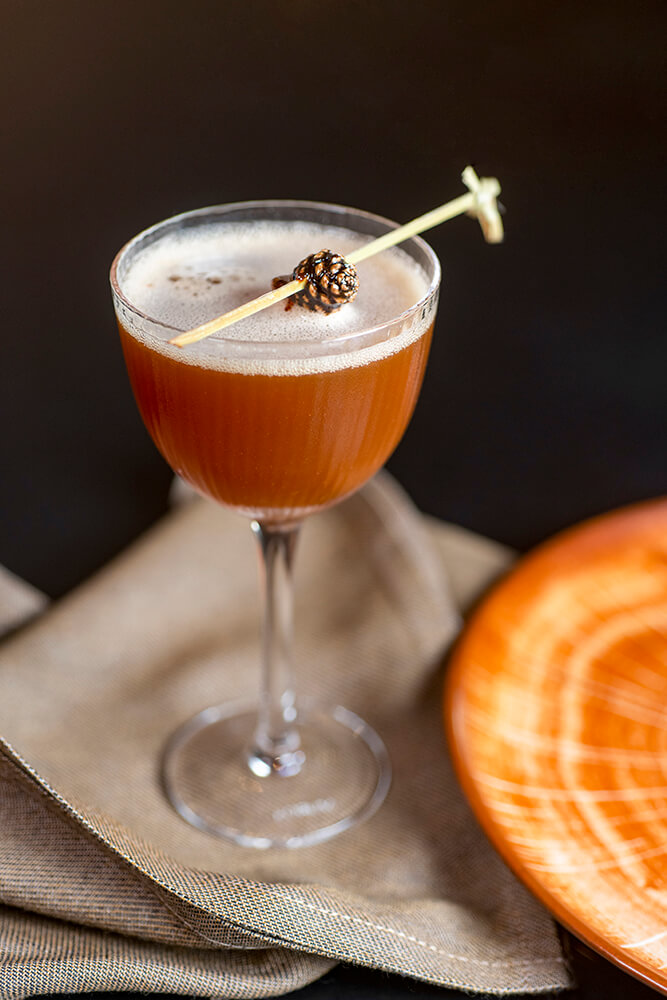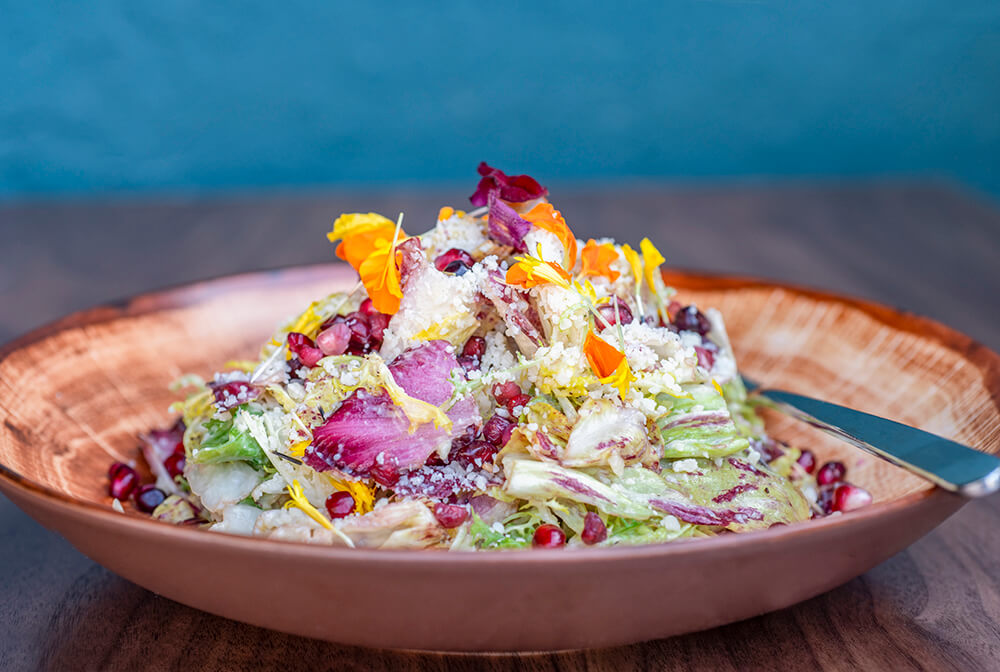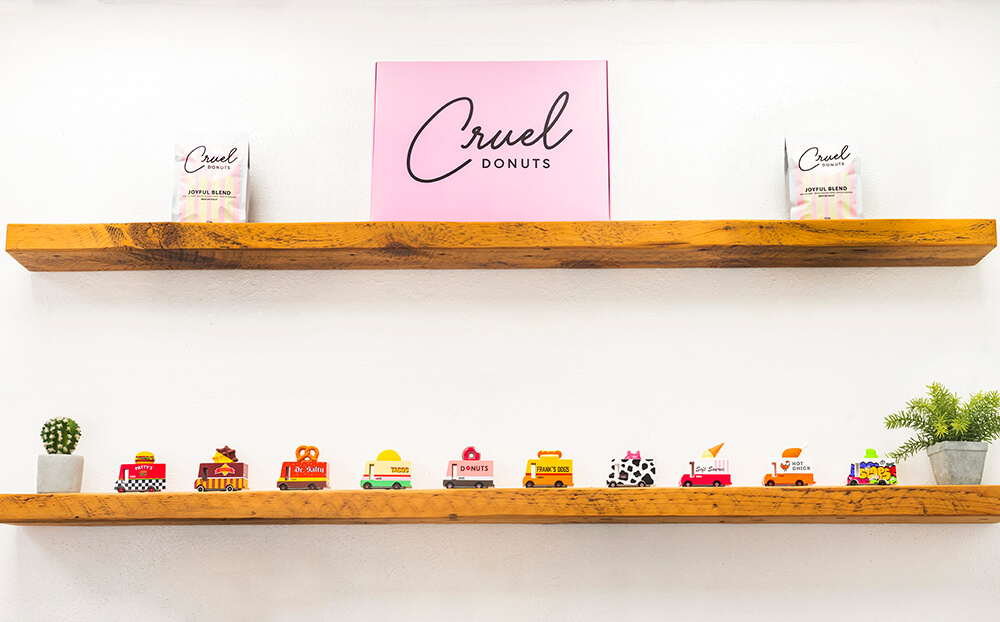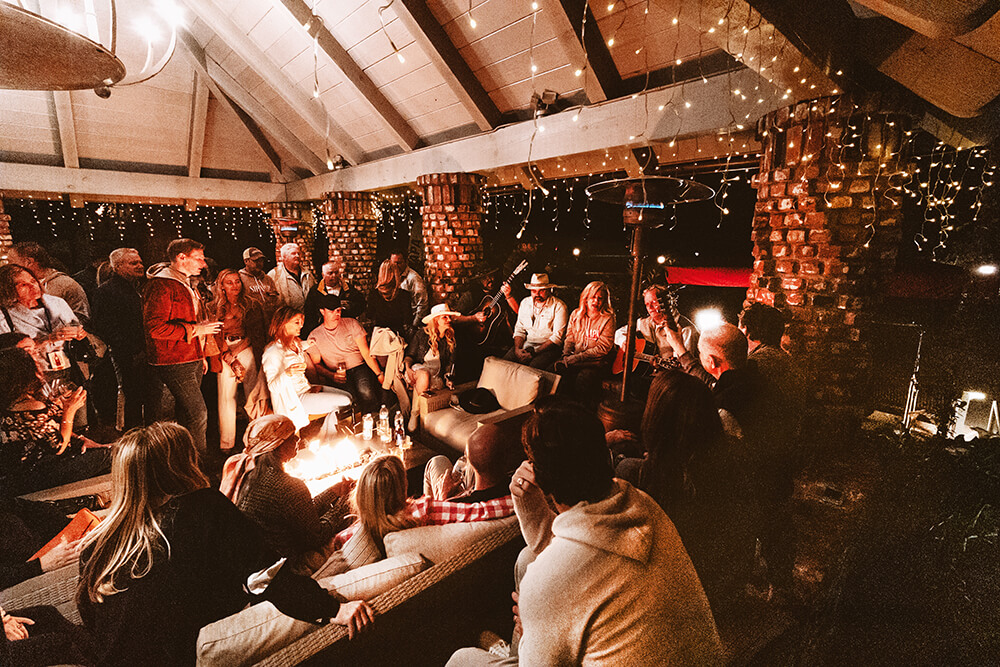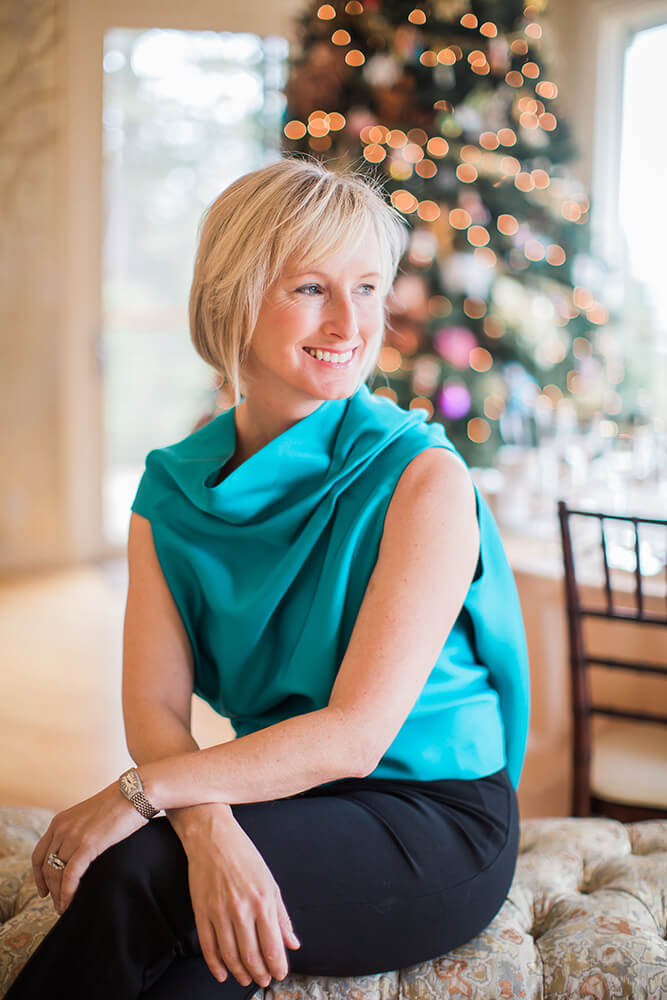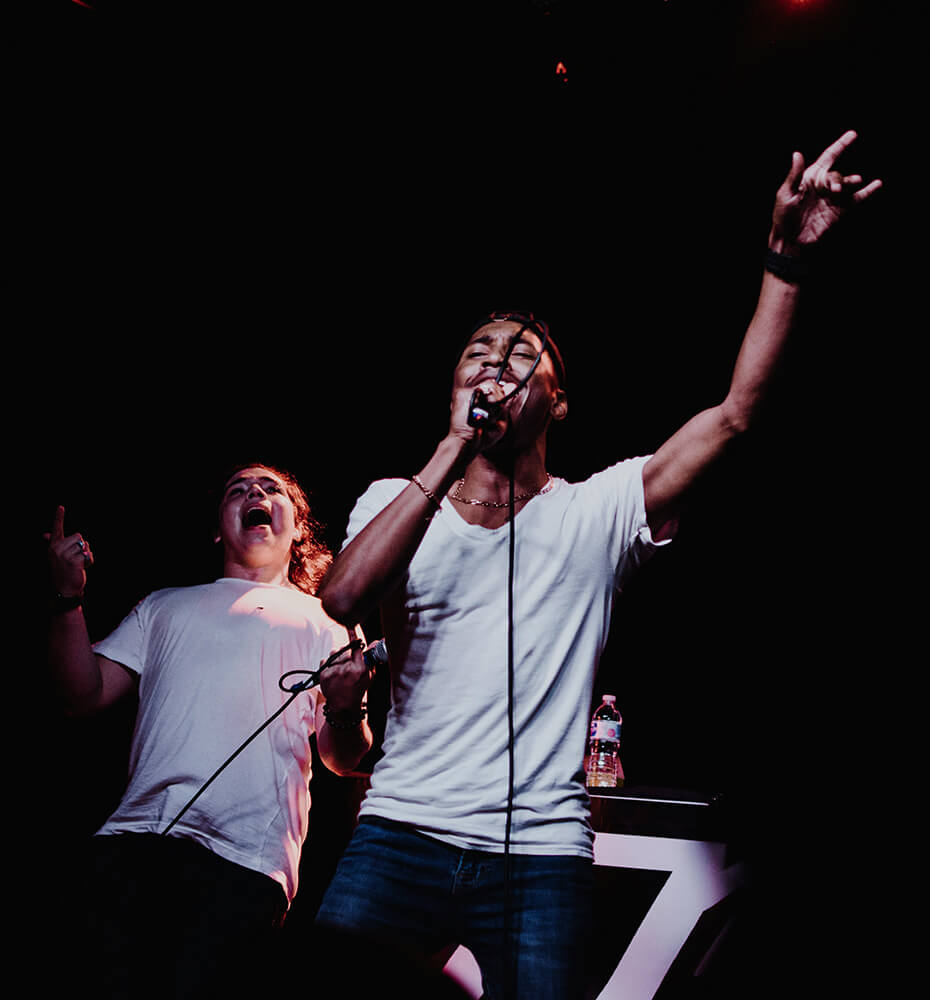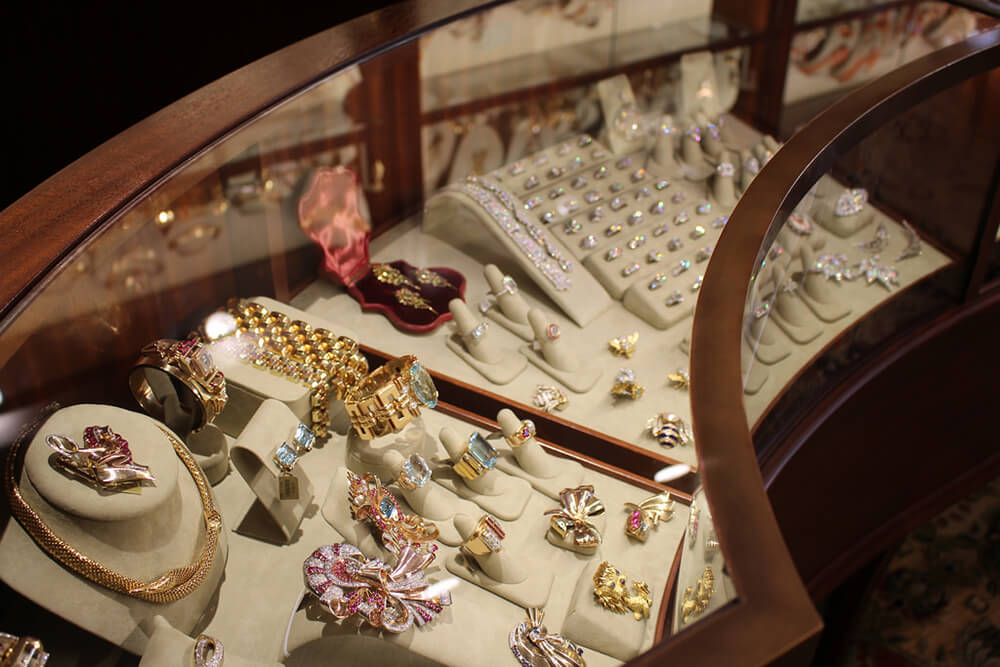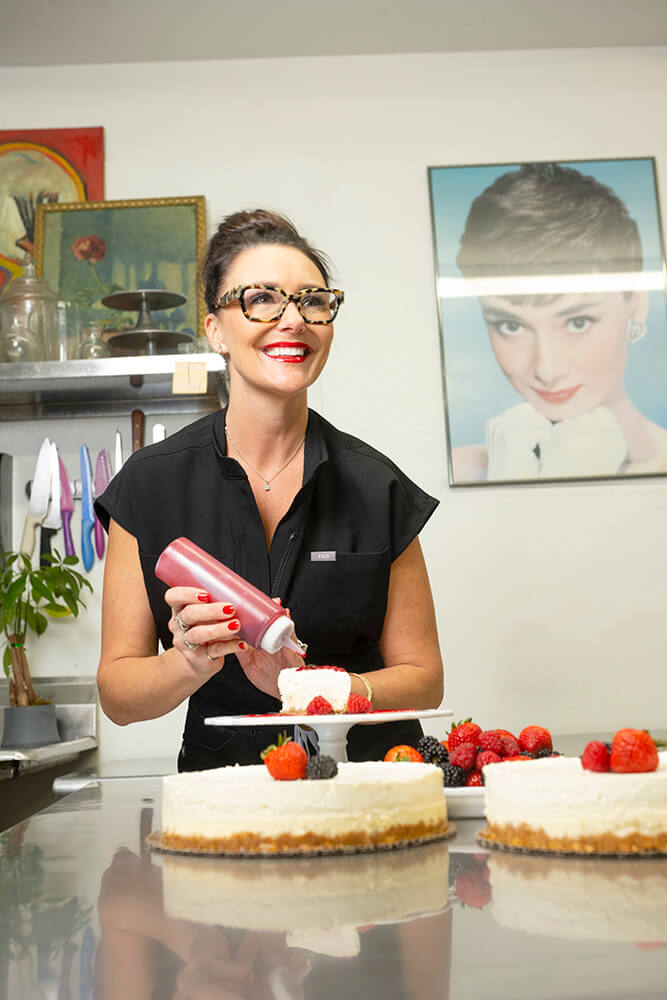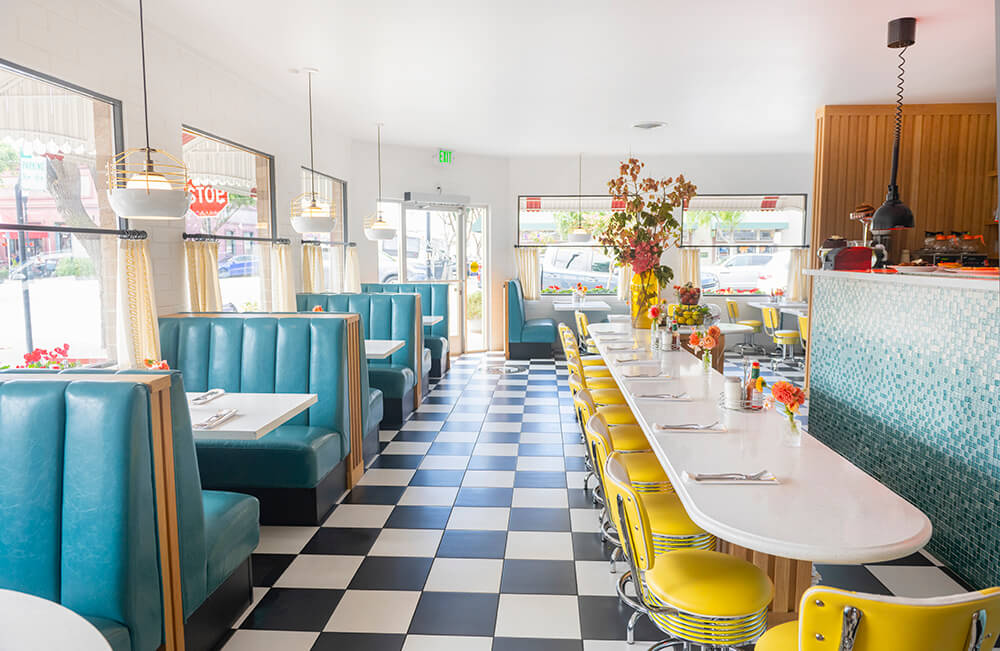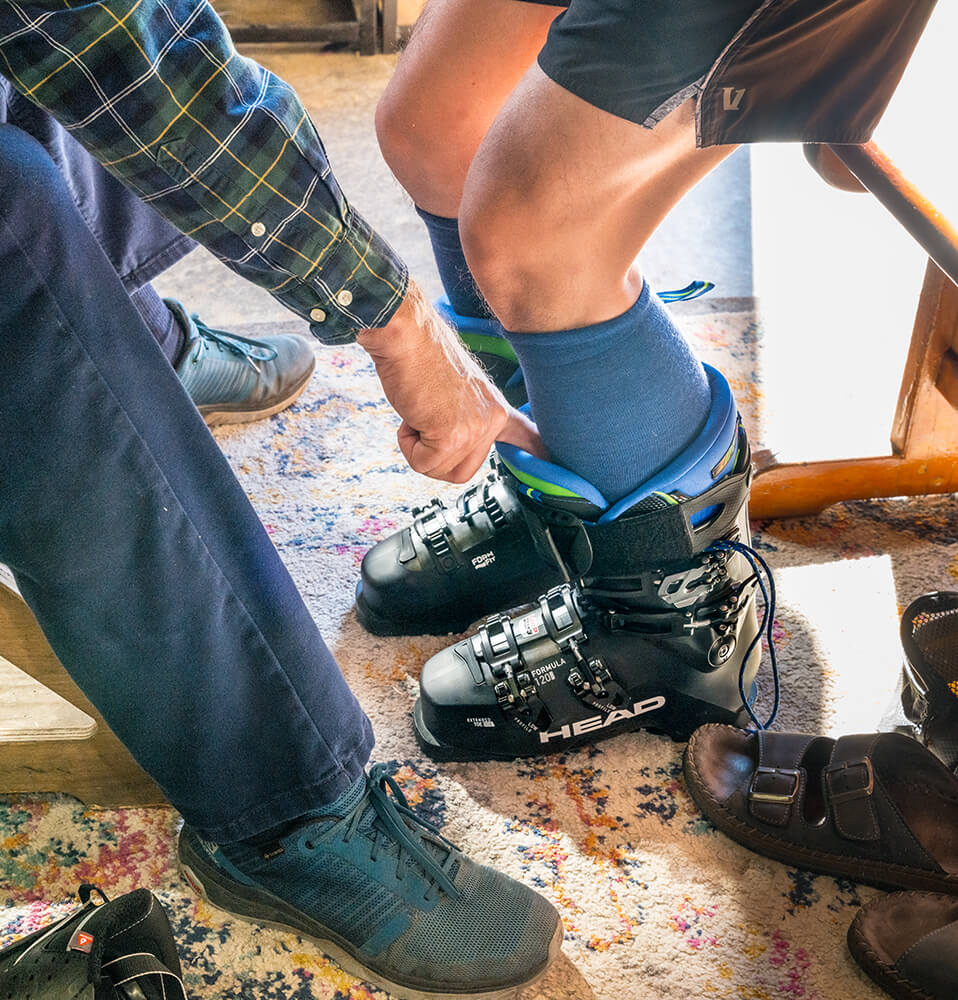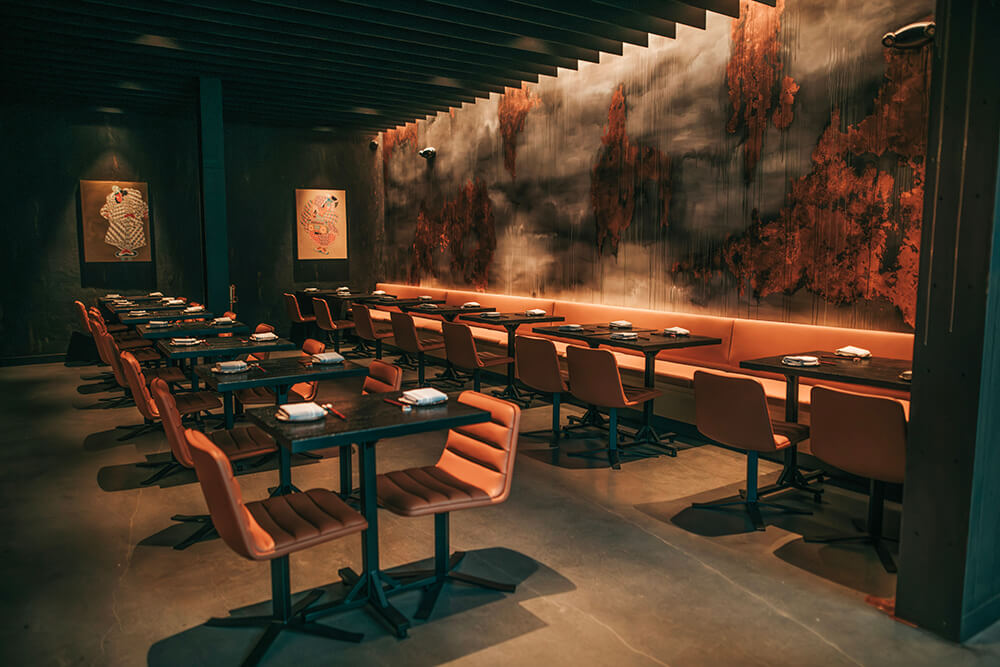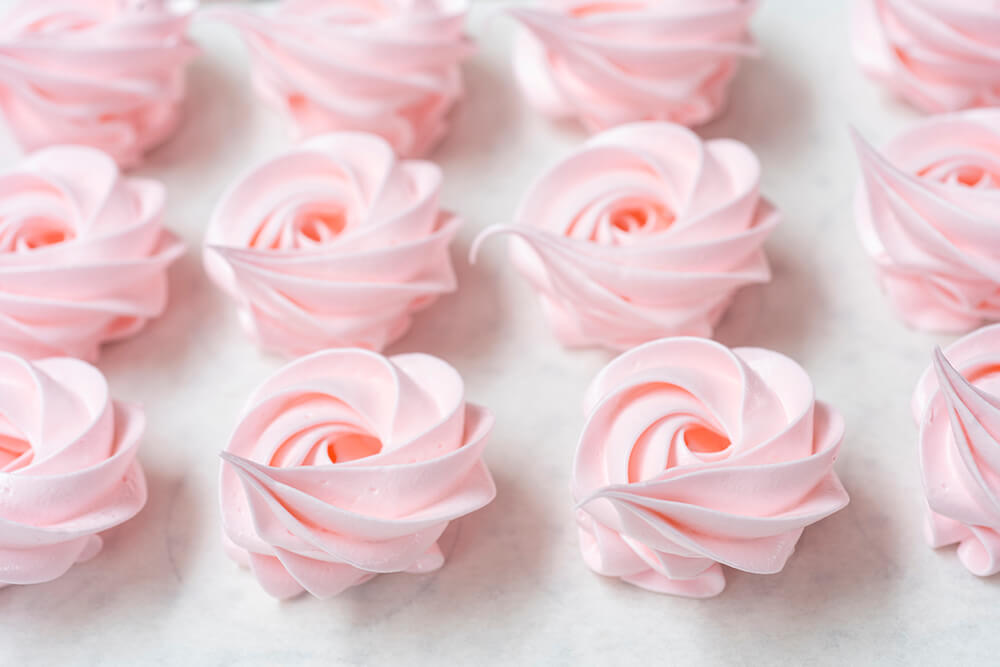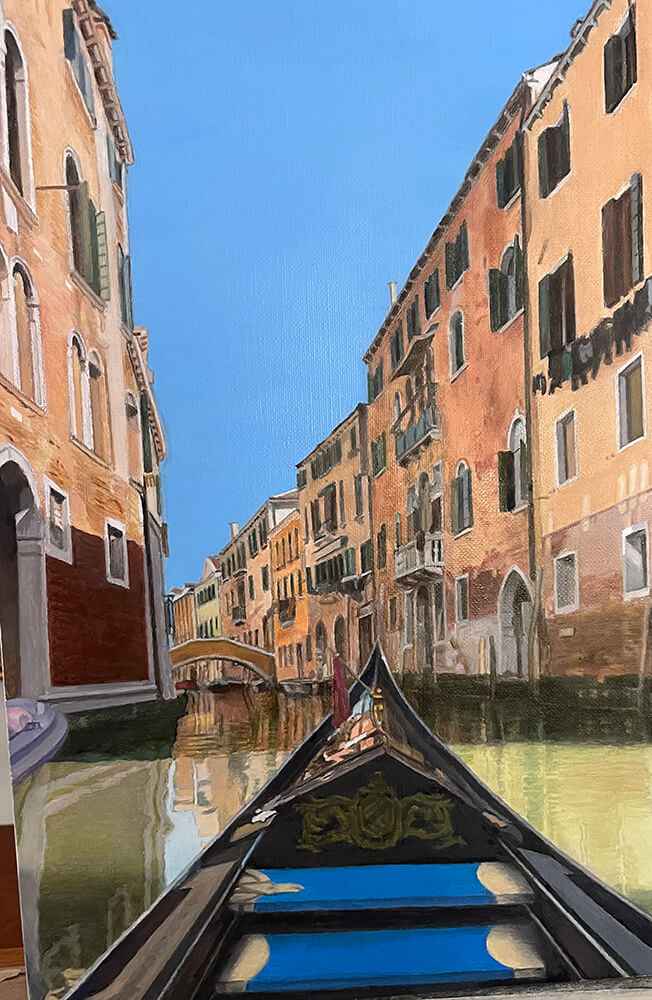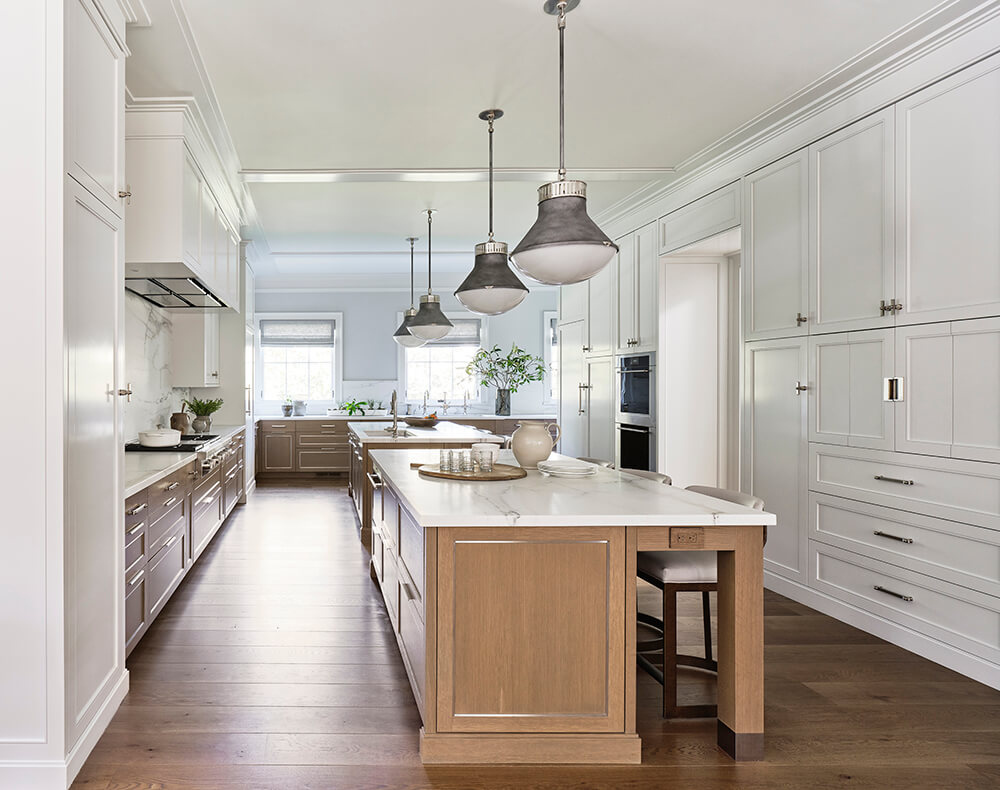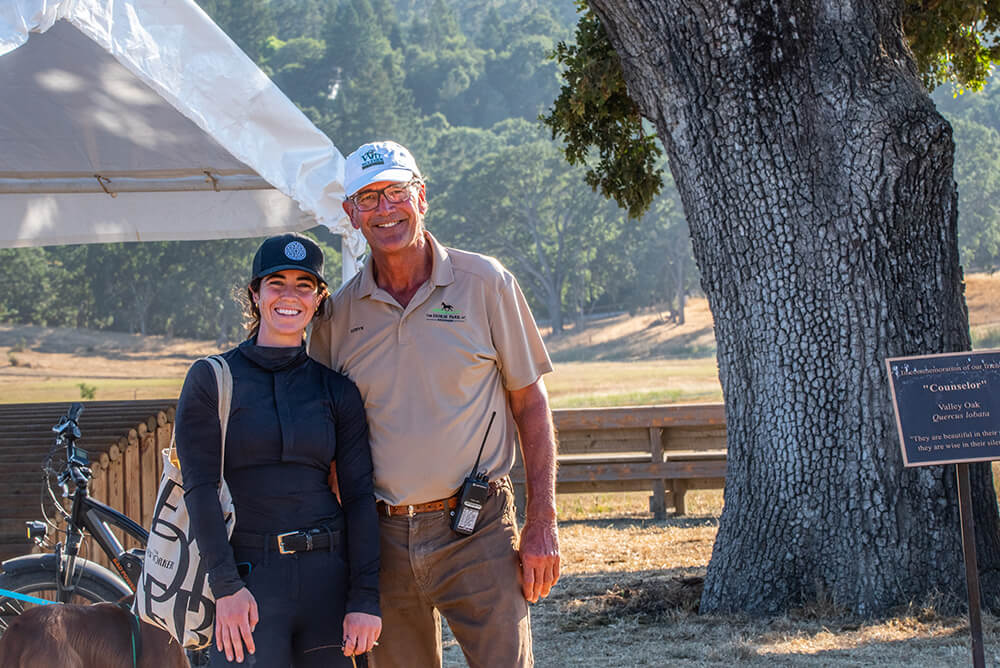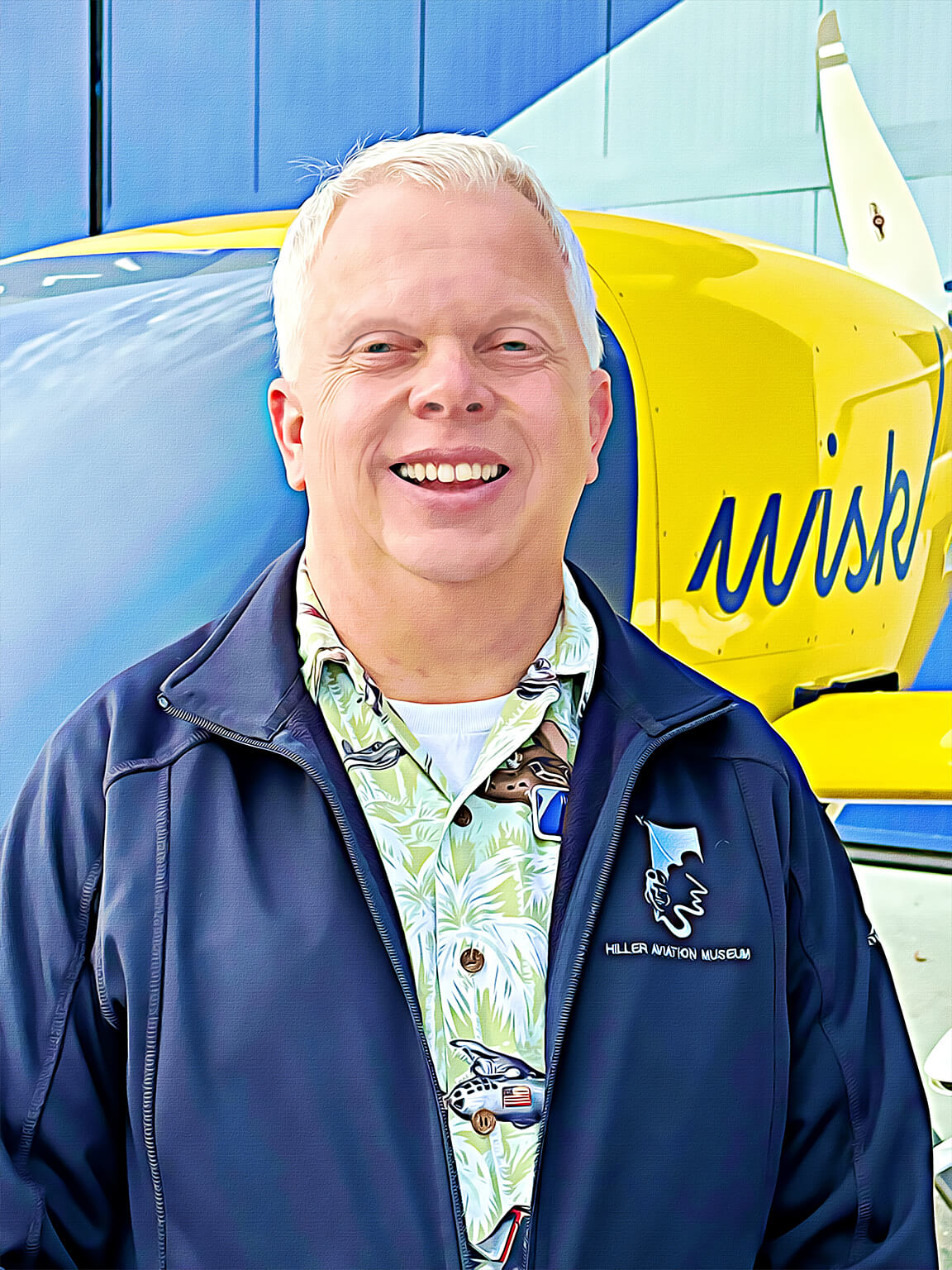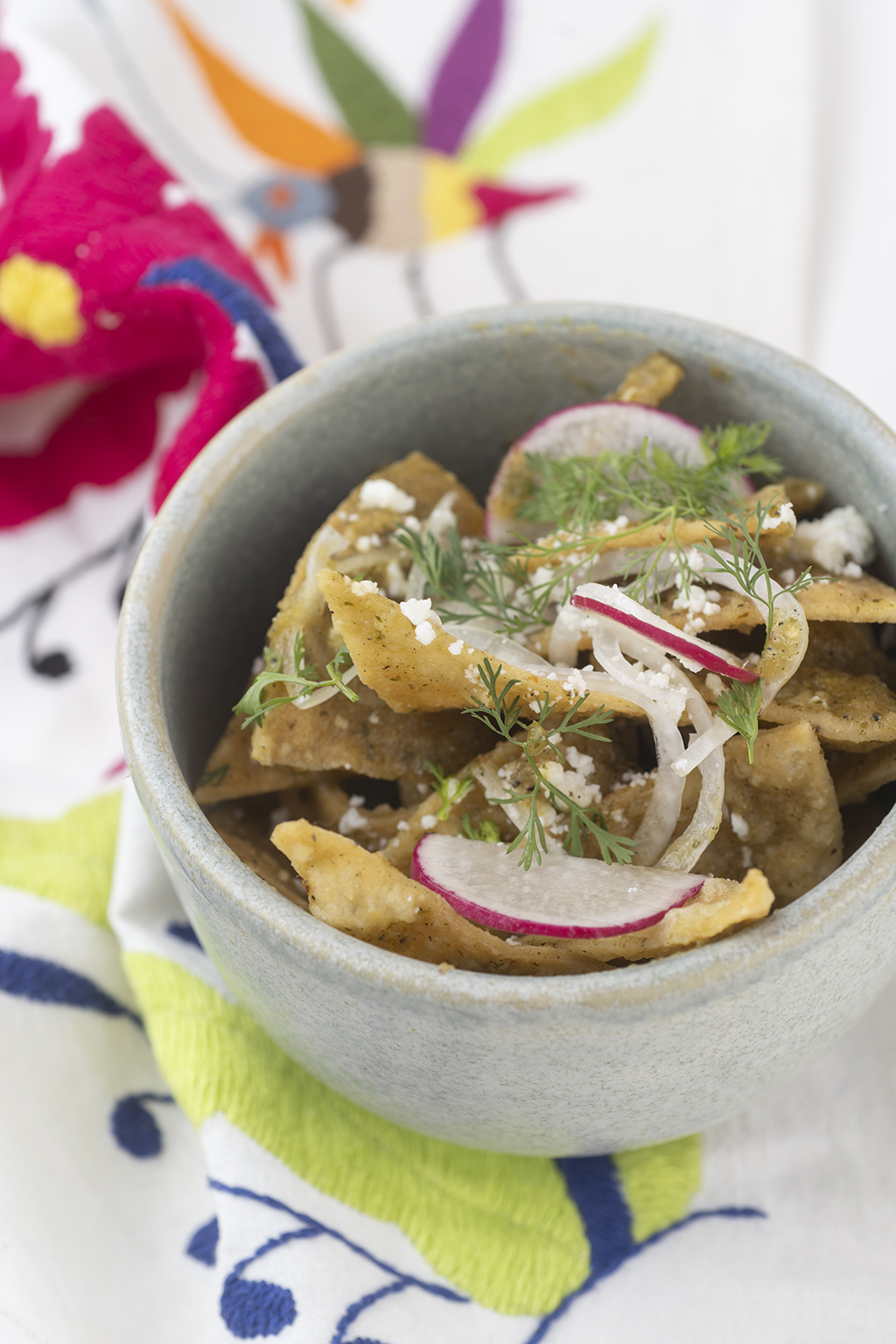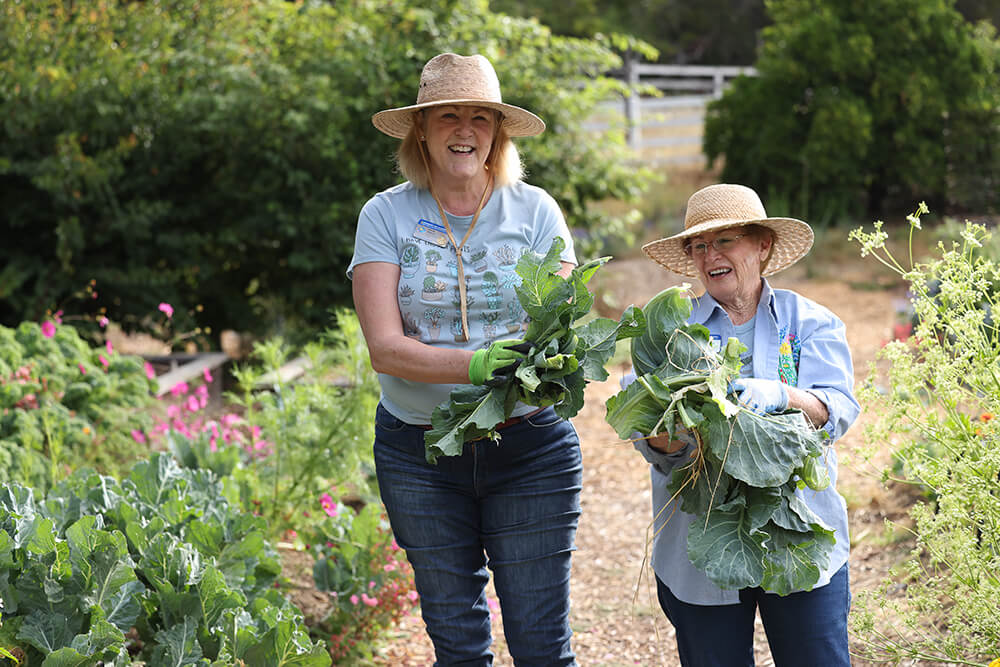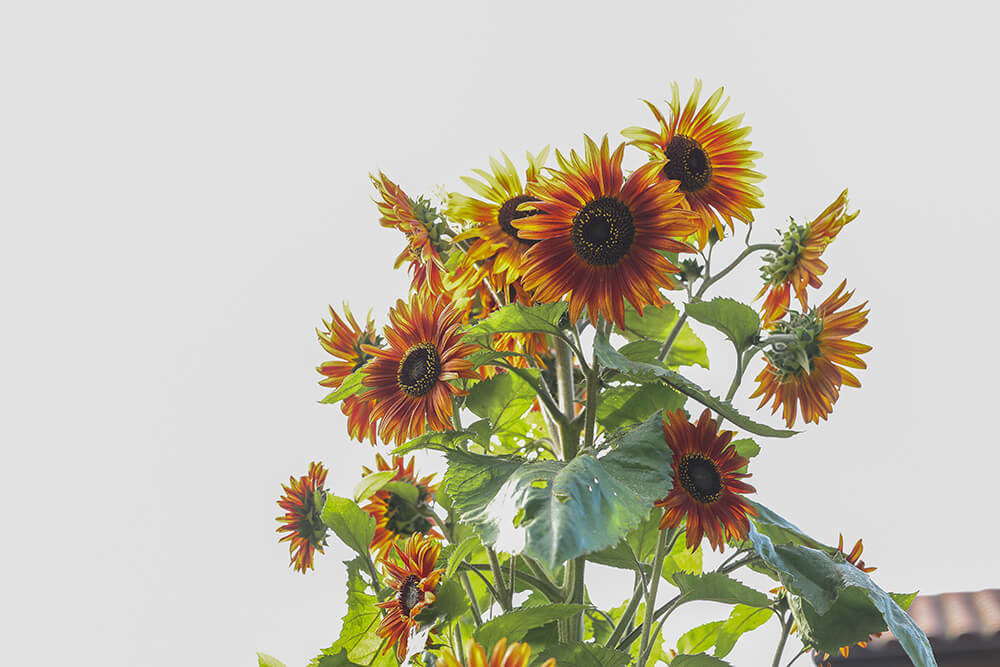Words by Johanna Harlow
Conventionality and Caroline Lizarraga have no business being in the same room. “I don’t think I would recommend calling me to do a white wall,” quips the decorative painter. If, however, you dream of walls coated in a rippling cut-agate design or dripping in gold resin, you’re in luck.
“I’m attracted to bolder, more dramatic, more moody things,” Caroline describes. “I love color. I love unexpectedness.” Walk into the painter’s own home and the first thing you’ll notice is the chandelier forged out of bike chains—followed by four-foot ostrich wall sconces. Make your way further down the rabbit hole and you’ll find that Caroline has painted a poem by Dante on the staircase steps and wrapped a misty treescape around the dining room (where a taxidermied white peacock named Higgins also resides). “It has a lot of soul,” reflects Caroline. “I want to be buried here, I love it!”

Portrait Photo: Courtesy of Assunita Simone
As a kid, Caroline spent three months hand-beading a lampshade for her father’s birthday. “My dad said he kind of knew that I wasn’t going to be a doctor,” she chuckles. Today, her artistic flourishes embellish walls, floors and furniture in private homes and restaurants across the Peninsula, San Francisco and the country. “Usually, my first question to clients is, ‘What’s the feeling that you want in this room?’” Caroline notes. Do they want to work hard here or unwind with a glass of wine? Would they like a bright space that makes them feel alive? Or, like Caroline, do they prefer a moodier space that draws them out of the ordinary?
“There are a lot of very bold people in the Bay Area,” Caroline points out. “There’s just a lot of ‘Go for it!’” She recalls a Peninsula project from two months earlier: “This woman wanted me to pour black resin drips down her wall!” She laughs, delighted by the audacity of the request.

Caroline’s own brazen decorating spirit started young. “I used to save all of my money babysitting, and I would buy really beautiful furniture for my dollhouse,” she reflects, adding, “I just gave it to my daughter for her birthday, and my mom said, ‘This is crazy. It kind of looks like your house!’”
An early thrifting habit also swayed the future of her career. “I’ve always been a flea market rat. I have a really hard time buying new things,” she explains. Once, Caroline paid $20 for a vintage two-tiered table. She applied gold leaf to the edges, painted it chartreuse with little magnolias, then added a crackle finish. An interior designer offered her $1,200 for the piece. The experience emboldened Caroline to study wood restoration in Florence, Italy, which led to an apprenticeship with a decorative painter in San Francisco’s Mission District to learn about lacquers as well as creating marble, lapis and chinoiserie designs.

In the present day, Caroline and her work have thrived, gaining recognition in publications such as House Beautiful, Architectural Digest and The New York Times. One favorite project to date: the entire home of Dita Von Teese. The burlesque dancer and fashion icon wholeheartedly embraced Caroline’s ideas for doors hand-painted with jewelry that “dripped diamonds and pearls” and a turquoise and red lacquer dining room. “From start to finish, it was a dream project,” Caroline says.
On top of her exuberant custom painting projects, Caroline is launching a wallpaper collection in Paris in collaboration with Parete this month and has organized a lifestyle experience with her husband. Described as “a journey through Puglia, Italy,” the program takes place in the town where Caroline’s husband grew up, and includes stone and marble texture painting classes, cooking classes, meetings with local artisans, architectural tours and plenty of Michelin meals.
“If I wasn’t a painter, I would be a chef,” declares Caroline, whose bold aesthetic taste is often sought by restaurateurs. Her paintbrush has graced the likes of Robin (both its SF and Menlo Park locations), Nightbird, Tosca, The Black Cat and Bottega. “If you’re going to a restaurant, you’re probably going to spend two to three hours max, and you want to remember that space,” she notes. “You need a bit more drama.”

For commercial and private projects alike, Caroline considers the local landscape. The painter illustrates with one client’s story: “She said, ‘I just feel really depressed in this color,’” Caroline recalls of their first consultation. “I said, ‘Well, look out your window! Every ugly building outside is the same color as your walls.” The same applies to idyllic settings. “If you have a hill behind your house and it’s all green, you’re not going to choose green for the interior,” she guides. “Maybe you choose a very deep gold color because that’s in the grass and that will pull you deeper into the hill.”
So what’s next for Caroline? “Hold on, I have 50 ideas, lemme show you!’” she exclaims, a gut response to this question. Anything can ignite her imagination: from nature—as her crocodile print, malachite and fishscale accent walls can attest—to fashion. “I’ll see a pair of pants, and I’ll think, ‘Oh my god, that pattern, blown up, dripping down the walls with some flashes of lacquer on it, will be amazing.’” Caroline pauses and glances about, as if sensing the next idea down the hall or around the corner.
“There’s a saying that if you do what you love, you don’t work a day in your life. The reality is you’re working every second—but if you love it, you’re not working in your mind, you know?”




